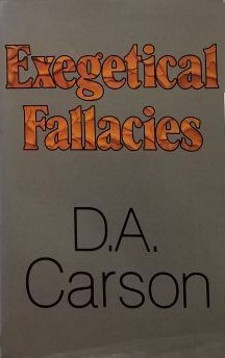Check nearby libraries
Buy this book

This book offers updated explanations of the sins of interpretation to teach sound grammatical, lexical, cultural, theological, and historical Bible study practices.
"I hope that by talking about what should not be done in exegesis, we may all desire more deeply to interpret the Word of God aright," says the author. "If I focus on the negative, it is in the hope that you will thereby profit more deeply from the positive instruction you glean from texts and lectures." Forty-eight kinds of fallacies are organized in this volume into four groups: (1) word-study, (2) grammatical, (3) logical, and (4) presuppositional and historical fallacies. "These pages make no claim to comprehensiveness in the kind of error discussed," writes the author. "Entries are treated because in my experience they are among the most common." Specific illustrations of fallacies abound. They are drawn from the works of liberals and conservatives, Calvinists and Arminians, unknowns and world-class scholars. "By and large my examples have been drawn from fairly serious sources, not popular publications where the frequency of error is much higher," the author writes. "But I have also included a few examples from popular preachers." This lively, enlightening, and not uncontroversial volume begins by discussing the importance of the study of exegetical fallacies, the dangers of it, and its limits. The book concludes with a list of seven areas "either not mentioned or barely alluded to in this book where more opportunities for fallacies lurk in the darkness to catch the unwary." The author has not written a highly technical book, aiming it instead at seminary students, pastors, and undergraduate Bible students with a command of elementary Greek. - Back cover.
Check nearby libraries
Buy this book

Showing 2 featured editions. View all 2 editions?
| Edition | Availability |
|---|---|
| 1 |
zzzz
Libraries near you:
WorldCat
|
| 2 |
aaaa
Libraries near you:
WorldCat
|
Book Details
Table of Contents
Edition Notes
Includes bibliographical references and indexes.
Classifications
The Physical Object
ID Numbers
Community Reviews (0)
Feedback?| September 21, 2024 | Edited by ImportBot | import existing book |
| August 15, 2020 | Edited by ImportBot | import existing book |
| July 27, 2020 | Edited by MARC Bot | import existing book |
| February 28, 2020 | Edited by MARC Bot | remove fake subjects |
| December 9, 2009 | Created by WorkBot | add works page |










